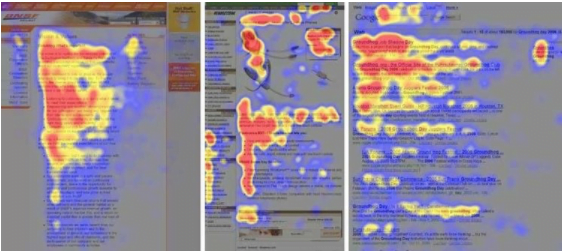Scrolling on a smartphone and scanning computers has changed the way we read and absorb information.
San Jose State University’s Ziming Liu told us this way back in 2005.
In 2019, cheeky SMS slang like TL;DR – which means ‘too long, didn’t read’ – is an elementary part of digital copywriting, moving away from being a dig at long, blathery copy and actually describing the summary bullet points of online content.
Humans don’t read screens the same way we look at printed matter – we scan web-based pages in an F or Z-shaped pattern to look for words or highlights that give context and meaning before our eyes settle and comprehend the text.

Or sometimes we don’t bother with the comprehension part and scroll to the next thing, or answer that call or send that damn SMS. Damn those short attention spans.
The changing nature of screen reading has important connotations for how we communicate and engage people with our message, whether it’s for business or pleasure.
7 steps to creating great microcopy
If an audience will give you less than a few seconds of attention, it’s a writer’s job to produce a great message that’s concise, engaging and distinctive.
Great digital copywriting helps the reader get their task done and let them move on to whatever they want to spend their time on next. This is no easy skill but it’s what separates someone who can open a Word document from a genuine copywriter.
DIGITAL MICROCOPY TIP #1: Brevity is more than the soul of wit
Short, short, short. Sometimes you only have three words when you wish you had six. The mobile screen is unforgiving on this point.
Don’t think that you can make the font size smaller to fit more on a screen – most UI and UX designers would say 16pt font is a good guide, as you want the mobile screen to be as readable as a printed page.
In other words, Facebook want to get out of the business of sparking human rights abuses, twisting political results or exploiting people’s data.
DIGITAL MICROCOPY TIP #2: Concise has helpers – use them
In the world of print, one headline and a story was enough to give a reader context. On a small screen, ‘helper text’ like sub-lines and buttons and CTAs (that’s a call to action for the uninitiated) are super important. These copy helpers are the canvas upon which a writer can paint meaning and relevance, all be it with just one to three words.
DIGITAL MICROCOPY TIP#3: It’s non-linear – exploit that
Digital copy has advantages over printed copy – it can be interactive, contain text, audio, video and interactive graphics.
Digital words are more often the source of immediate information to answer a search query, research where you want to go for dinner or entice you to read something.
Don’t waste words, and don’t waste the opportunity to add great imagery or links that make your content even more relevant and helpful to a reader.
DIGITAL MICROCOPY TIP#4: What’s the context? Frontload what’s important
Copy doesn’t exist in a vacuum – how will your reader discover this content and what do they need to do next? Are you trying to inspire them to read something or get them to make a booking?
Put the most important thing first. The most important thing is very often the thing right at the bottom of the page – find the conclusion or point of the content and put it right upfront.
Saatchi and Saatchi’s Kevin Roberts once said, “Emotion, intuition, long-term memories and unconscious motivations make up as much as 80% of our decision-making processes.” So use your writerly judgment along with data to inform what should be upfront.
DIGITAL MICROCOPY TIP#5: Use tone and voice consistently
Buzzfeed wouldn’t be Buzzfeed without its colloquial, clickable headlines like 25 kitten gifs that Aquarians need to smile at. But you wouldn’t trust Web MD if they started talking about breast cancer gifs or sprained ankle memes..
Tone and voice are hard things to pin down, but good copywriters know the difference. Tone is about finding the right ‘sound’ or ‘character’ for your copy, which should reflect whatever brand you are writing for. Some of the big web giants are hiring poets and philosophers to explore the write character and tone for their digital presence.
DIGITAL MICROCOPY TIP#6: Optimise and edit
Digital’s great benefit is that it’s quick and timely to publish and make changes.
When I was a print editor, we would proof the same page four times before it went off to the printer – and still you would find an error somewhere. It was hell.
As a digital editor, you can fix a typo in less than 10 seconds.
You can also scroll your analytics and data to check whether the copy is performing as well as something comparable and change a headline, tweak a word or change the colour of a button.
Obviously you don’t do this for everything you’ve written, but important pages, landing pages or posts should be optimised as best suits the business requirement. You can also A/B test copy before you even publish, which also helps you learn the best action words to pull out of your bag of tricks.
DIGITAL MICROCOPY TIP#7: Words should come before design
Well of course I would say that, I am a writer. But I’ve worked in this industry long enough to know that when apps or websites start with a page design and use placeholder Lorem Ipsum dummy text, they are murdering engagement success. Determining the key words for a page isn’t merely about winning search results – key words (which aren’t always the same as Google’s idea of key words) also define the meaning and context of great digital copywriting. In my view, the design should be about making the meaning obvious and easy, not leaving words as the afterthought.
This is from Don’t Make Me Think, the best book ever about crafting great digital copy and design experiences.
So are you still reading?
I already know most of you will have dropped off by now. But if you’re still scrolling and reading, thank you, I appreciate it.
Digital information risks overwhelming us in its tsunami of content, but we humans have very clever ways to adapt to change.
We skim read. We scan. We look for shortcuts to not only help understand the vast quantity of content thrown at us, but discern what we should pay attention to.
The human brain is probably not hardwired to read text – we just adapted to reading, possibly as we saw the advantages of communicating as a group and enjoying stories.
If you’ve read Sapiens by Yuval Noah Harari, you’ll know that over a timespan of just six millennia, reading and mythology became the key catalyst for intellectual development, propelling the human race to advance beyond other species.
“The acquisition of literacy is one of the most important epigenetic achievements of homo sapiens,” writes Maryanne Wolf, the author of Reader Come Home.
Wolf writes that her ability to read has changed as she is increasingly dependent on screens. Most of us probably agree with her – hunting down headlines, videos and images of interest seems to be the key to dedicating time to read more on a screen than it does on the printed page (or it does to me, anyway!).
So it’s not too full of hyperbole or gush to proclaim that digital content demands new ways of writing and engaging with people.
Kleiner Perkins Mary Meeker’s 2018 internet report found consumers are spending 41 hours a week with digital media – that’s a heck of a lot of time to program your brain to respond differently as you scroll and click. https://www.kleinerperkins.com/perspectives/internet-trends-report-2018/
What we read, how we read and why we read changes, and it particularly changes how we think. I mean, just 10 years ago would anyone imagine they would get most of their news from social media rather than the trusted television, radio and newspaper brands? No way!
The digital content tsunami – also known as Content Shock – is driving many of the reading and engagement changes, because more businesses, media brands, influencers and even your friends and family are creating content they want you to read.
And that’s why the skill of microcopy (sometimes also called UX copy) is so important. The fine art of very precisely, but oh-so-minimally, capturing a message in words and overtly hooking a reader into why it’s relevant for them.
Personally, I think writing three words for a two-second attention span is just as exciting as writing a long form piece (like this one!).
Words can be bigger than their character count. Just do it. Think Different.

